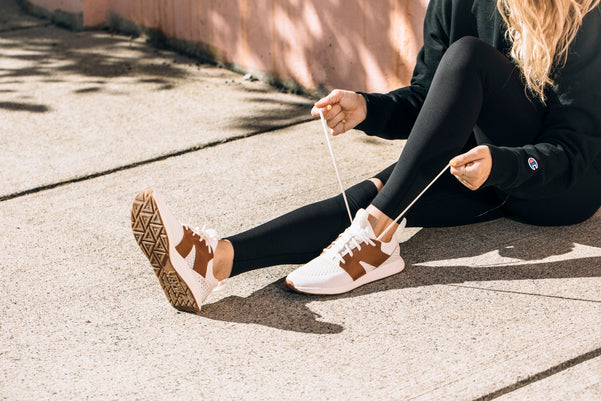11.17.21Dylan York
How Often Should You Get New Shoes?

Shoes do a lot for you in your everyday life, from the toughest workouts to pulling an outfit together and even play a role in your overall health and wellness. But as with any product and all things in life, shoes only last so long. Which leads to the question, how often should you get new shoes?
First, let’s clarify the difference in wanting new kicks and needing them. For sneakerheads and shoe fanatics, any moment is the right time to get a new pair, but that isn’t what we’re talking about (but for those who just love new kicks, have you checked out the full YORK lineup?) When it comes to needing to replace a pair of shoes, there are a few factors that can determine the best time to invest in a new pair, such as how often you wear them and for what activities. Casual shoes that are worn for just everyday life, not a workout, can often have a much longer life.
Whether occasional or everyday shoes, the moment you start feeling any form of discomfort on your feet while on a particular pair of shoes, that's enough of a sign to get a new pair of shoes. The thing is, the healthiness of your foot highly depends on the kind of shoes you wear and the condition that they are in. Worn out shoes go as far as affecting your calves, ankles and hips. You can also get blisters and other foot problems if you don't get a new pair early enough.

Let's look at a few signs that show it's time to replace your shoes:
Lack of support and discomfort on your foot
The primary function of shoes is to provide support and comfort to your feet. When you stop getting the needed comfort from a pair of shoes, it's high time you replaced them.
It shouldn't matter if they still look new or trendy. Comfort is something you shouldn't compromise — managing discomfort can lead to foot problems like blisters, soreness of the foot, and more.
Wear and tear
Wear and tear is mostly why many people would dump an old pair of shoes for a new pair. Wear and tear are obvious signs that your pair of shoes are old, and need to be replaced. Wear and tear in shoes are of three types:
— Outsole wear: Outsole wear is an indicator that the bottom of your shoes (soles) that provide support have gone soft. The soles of your shoes are usually hard to enable your shoes to absorb shock when your feet land on a surface. Shock absorption is applicable to your workout, running, or athletic shoes.
You can also identify outsole wear by putting your shoe on an evenly flat surface. If they bend towards a direction, then it's time to go. The soles of your shoes should be as balanced as possible.
— Midsole/cushioning layer wear: The middle of your sole absorbs shock when you run or perform activities. You'll know the midsole has become weak when your feet feel impact, and no longer absorb shock.
— Interior wear: Like the name implies, this is when you notice that the inside of your shoe is falling apart. The shoes start peeling off from within.
Aches and pains
It's wrong to get to this level before changing your shoes. Many people wait until they start having foot aches and pains before letting their old shoes go. It's unhealthy for your feet, and you should be more observant of your shoes to know when it's time to get a new pair.
How often should you replace workout shoes?
There's a debate on how long workout shoes should last. Some shoe experts say when your shoes have walked or ran 300 - 500 miles, depending on intensity and impact. A few experts are of the opinion that regular workout shoes shouldn't last more than six months, depending on the material, your weight, and other activities. Ultimately, the best way to determine is to listen to your body, look for discomfort when wearing a pair of shoes, and look for clear signs of wear and tear.

How often should you replace your running shoes?
Running is one of the exercises that help keep your body in shape. Runners need comfortable, supportive and balanced running shoes. Old running shoes no longer provide runners with the much needed support, shock absorption and comfort for their feet, which affects their ankles, knees, hips and sometimes, their spines.
Experts recommend that you should change your running shoes when they've covered 300 - 500 miles. You don't have to wait for the soles of your running shoes to start falling apart. The longevity of your running shoes is dependent on durability (material) and structure (shape) of the shoes.

Replacing shoes will also depend on when the timing is right with your wallet and it fits into your life, but knowing when to get a new pair of shoes, especially your workout shoes, can have tremendous benefits for overall health.
By creating an account, you agree to the Terms and Conditions and Privacy Policy of York Athletics.